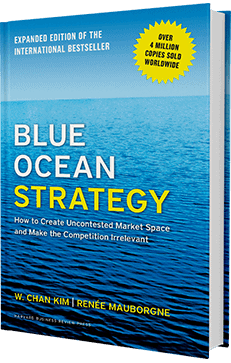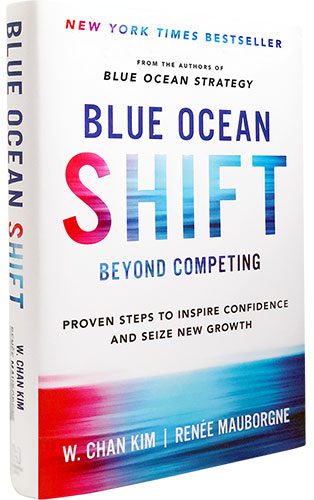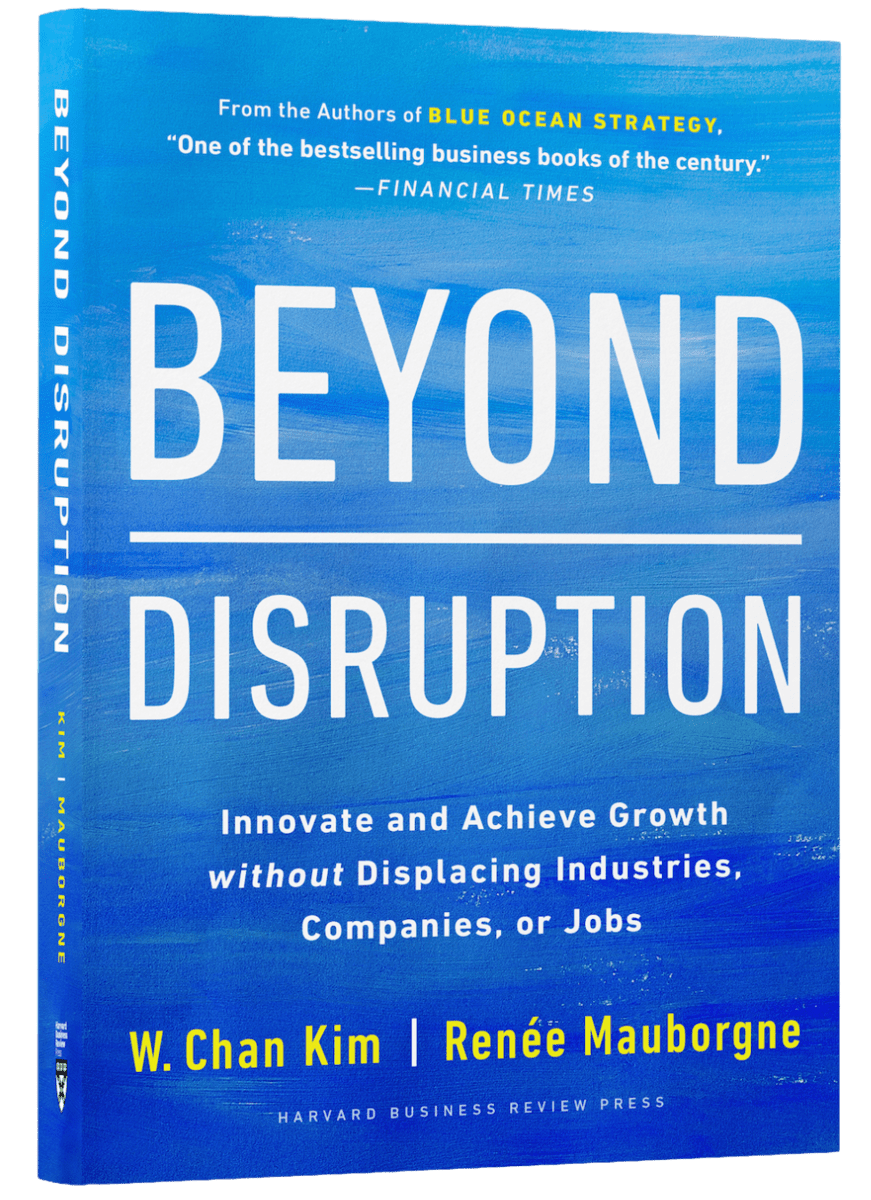📚 Unlock the World of AI and Humanity with These Two Free Books! 🚀
Dive into the thrilling realms of artificial intelligence and humanity with "The ECHO Conundrum" and "Awakening: Machines Dream of Being Human". These thought-provoking novels are FREE this week! Don't miss the chance to explore stories that challenge the boundaries of technology and what it means to be human.
Read More & Download
Blue Ocean Strategy is a market-creating approach that focuses on developing uncontested market space rather than competing in existing, crowded markets. It emphasizes the simultaneous pursuit of differentiation and low cost, making competition irrelevant. This strategy challenges the traditional view of fixed market boundaries and industry structures, suggesting they can be reconstructed by the actions and beliefs of industry players.
What is the Role of Strategic Management in Modern Business Management? helps us understand the importance of strategic choices in shaping a business’s future. This innovative approach is not about outperforming the competition; it’s about creating a new game with its own set of rules, resulting in significant and rapid profitable growth.
Understanding Red and Blue Oceans
The creators of Blue Ocean Strategy, W. Chan Kim and Renée Mauborgne, introduced the concepts of “red oceans” and “blue oceans” to illustrate the market universe. These terms are central to understanding the core principles of this groundbreaking strategy.
Red Oceans: The Existing Market Reality
Red oceans represent all existing industries – the known market space. In these established markets, industry boundaries are clearly defined, and the competitive rules are well-understood. Companies in red oceans strive to outperform rivals and capture a larger share of existing demand. This often leads to intense competition, diminishing profits, and slower growth as the market becomes saturated. Products become commoditized, resulting in price wars and cutthroat competition, hence the term “red ocean,” symbolizing a bloody battleground.
Blue Oceans: Untapped Market Potential
Blue oceans, conversely, represent all the industries not yet in existence – the unknown market space, free from competition. In blue oceans, demand is created rather than fought over. This allows for substantial opportunities for rapid and profitable growth. Because the rules of the game are yet to be established, competition is irrelevant. The “blue ocean” analogy represents the vast, deep, and powerful potential of unexplored market spaces, offering a compelling alternative to the limitations of red oceans.
Blue Ocean vs. Red Ocean Strategy: A Comparative Analysis
The following table highlights the key distinctions between red and blue ocean strategies:
Red Ocean Strategy
- Competes in existing market space
- Aims to beat the competition
- Exploits existing demand
- Faces the value-cost trade-off
- Aligns the firm’s activities with differentiation or low cost
Blue Ocean Strategy
- Creates uncontested market space
- Makes the competition irrelevant
- Creates and captures new demand
- Breaks the value-cost trade-off
- Aligns the firm’s activities with both differentiation and low cost
What is the Role of SWOT Analysis in Modern Business Management? can provide further insights into analyzing competitive landscapes and identifying opportunities for strategic differentiation.
Meet the Minds Behind the Strategy: Chan Kim and Renée Mauborgne
Chan Kim and Renée Mauborgne, the authors of the bestselling books Blue Ocean Strategy and Blue Ocean Shift, have revolutionized strategic thinking. Recognized as #1 Management Thinkers in the World by Thinkers50 and among the leading thinkers in Harvard Business Review’s history, their work continues to inspire businesses to seek and create blue oceans.
Key Principles of Blue Ocean Strategy and Shift
The core principles of Blue Ocean Strategy and Shift provide a foundation for successful strategy development:
- Data-Driven: Based on extensive research across various industries and strategic moves.
- Differentiation and Low Cost: Pursues both differentiation and low cost simultaneously, creating a unique value proposition.
- Uncontested Market Space: Focuses on creating new market space rather than competing in existing ones.
- Practical Tools and Frameworks: Offers a systematic approach with practical tools and frameworks for implementation.
- Step-by-Step Process: Provides a clear process for identifying and creating blue ocean opportunities.
- Risk Mitigation: Maximizes opportunity while minimizing risk through testing and refinement of ideas.
- Integrated Execution: Builds execution into the strategy development process, ensuring alignment and ownership.
- Win-Win Outcomes: Aims for a win-win outcome by aligning value, profit, and people propositions.
Blue Ocean Strategy in Action: Tools and Frameworks
Blue Ocean Strategy provides a range of tools and frameworks to help organizations transition from red oceans to blue oceans. These tools facilitate the process of identifying and creating new market spaces. They empower businesses to effectively implement the Blue Ocean Strategy and achieve sustainable growth.
The Books That Redefined Strategy
Blue Ocean Strategy and Blue Ocean Shift have become essential reading for anyone seeking to understand and apply this innovative approach. These books have transformed how businesses think about strategy and have sold millions of copies worldwide.
Blue Ocean Strategy
This groundbreaking book introduced the concepts of red and blue oceans and challenged traditional competitive thinking. It provides a systematic approach to making the competition irrelevant and offers practical tools for creating blue oceans.
📚 Unlock the World of AI and Humanity with These Two Free Books! 🚀
Dive into the thrilling realms of artificial intelligence and humanity with "The ECHO Conundrum" and "Awakening: Machines Dream of Being Human". These thought-provoking novels are FREE this week! Don't miss the chance to explore stories that challenge the boundaries of technology and what it means to be human.
Read More & Download
Blue Ocean Shift
This follow-up book builds upon the original concepts and offers a practical guide for implementing the Blue Ocean Strategy. It provides a step-by-step process for shifting from red oceans to blue oceans and inspiring confidence in the process.
 blue ocean strategy book cover
blue ocean strategy book cover
What is the Role of SWOT Analysis in Modern Business Management? can be a useful tool in the initial stages of Blue Ocean Strategy implementation, helping to understand the existing competitive landscape.
Beyond Disruption: A New Approach to Innovation
Beyond Disruption, the latest book by Kim and Mauborgne, introduces the concept of “nondisruptive creation.” This approach focuses on innovation and growth without the displacement often associated with disruptive innovation. It offers a new perspective on how businesses can create value and achieve sustainable growth without harming existing industries, companies, or jobs.
Blue Ocean Sprint with AI Navigator
The Blue Ocean Sprint program offers a practical, hands-on approach to applying Blue Ocean Strategy principles. With the new AI Navigator, businesses can leverage advanced technology to accelerate their growth, break free from competition, and redefine their market.
Real-World Examples of Blue Ocean Strategy
Numerous companies across various industries have successfully implemented Blue Ocean Strategy. These examples demonstrate the power of creating new market space and achieving significant growth. They illustrate how businesses can break away from traditional competitive thinking and achieve sustainable success.
 Powerful examples of blue ocean strategy
Powerful examples of blue ocean strategy
Conclusion: Embracing the Blue Ocean Mindset
Blue Ocean Strategy is more than just a set of tools and frameworks; it’s a mindset shift. It encourages businesses to challenge conventional wisdom, look beyond existing market boundaries, and create new demand. By embracing the principles of Blue Ocean Strategy, organizations can unlock new growth opportunities and achieve sustainable success in today’s dynamic market environment.
FAQ: Addressing Common Questions about Blue Ocean Strategy
Q: How does Blue Ocean Strategy differ from traditional strategic planning?
- A: Traditional strategic planning often focuses on competing within existing market boundaries, while Blue Ocean Strategy emphasizes creating new, uncontested market space.
Q: Is Blue Ocean Strategy only applicable to large companies?
- A: No, Blue Ocean Strategy can be applied by businesses of all sizes, from startups to established corporations. The principles of creating new value and making competition irrelevant are applicable across various contexts.
Q: What are some common challenges in implementing Blue Ocean Strategy?
- A: Some challenges include overcoming organizational inertia, resistance to change, and accurately identifying unmet customer needs.
We encourage you to share your questions and experiences with Blue Ocean Strategy in the comments below. Your insights and inquiries can help enrich the understanding and application of this powerful approach to market creation and business growth.
📚 Unlock the World of AI and Humanity with These Two Free Books! 🚀
Dive into the thrilling realms of artificial intelligence and humanity with "The ECHO Conundrum" and "Awakening: Machines Dream of Being Human". These thought-provoking novels are FREE this week! Don't miss the chance to explore stories that challenge the boundaries of technology and what it means to be human.
Read More & Download





